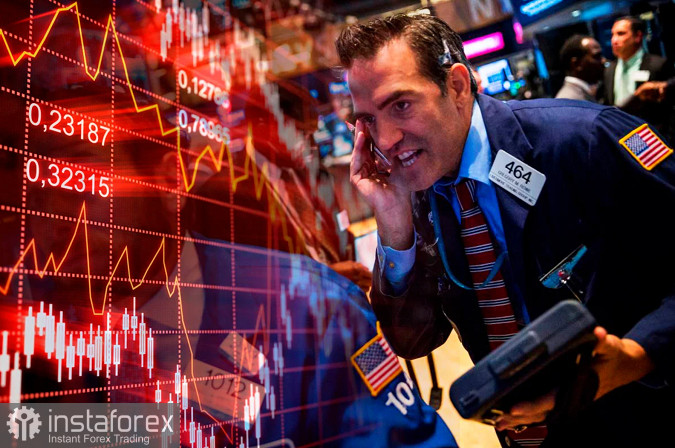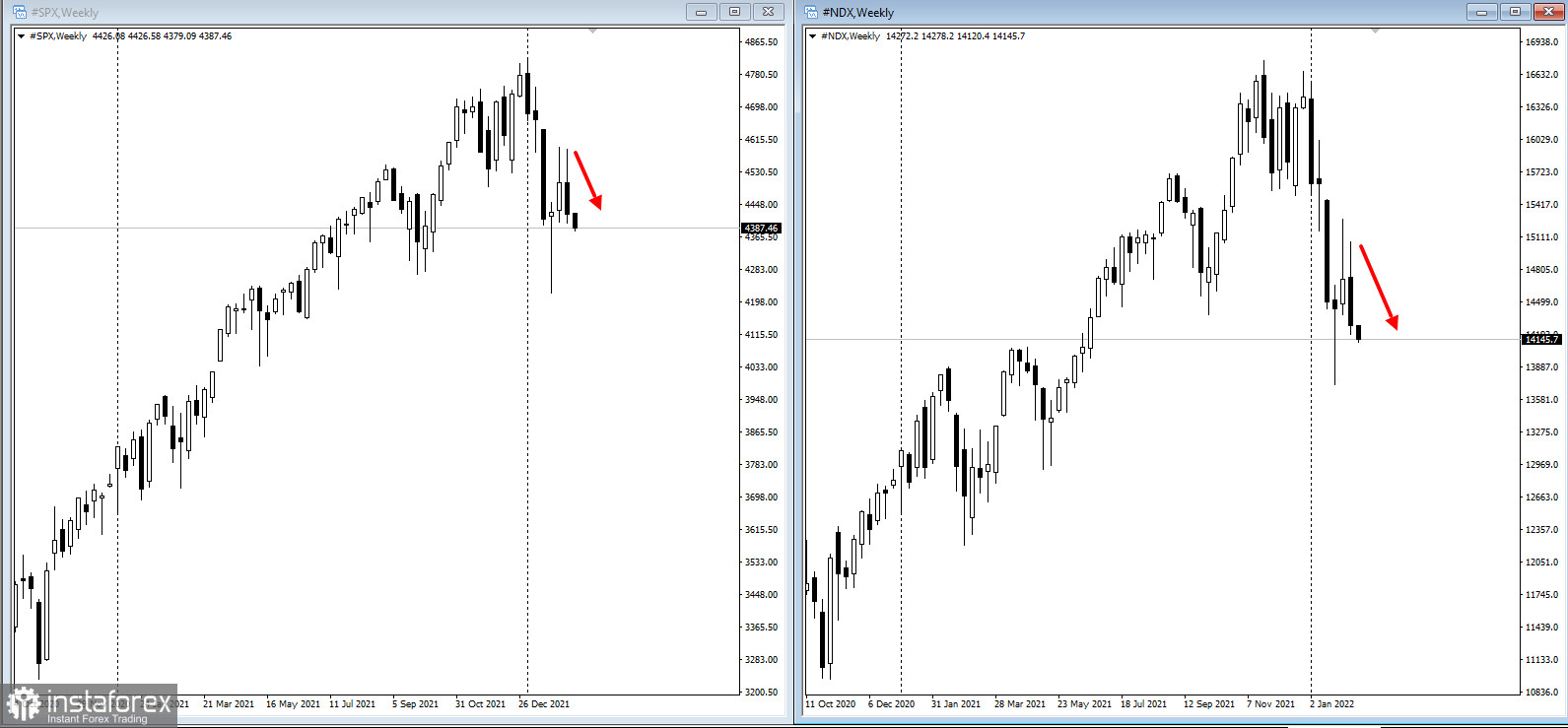
US stocks edged lower on Friday as tensions within Ukraine escalated. The government of the UK even advised its citizens living in the country to evacuate immediately.
The S&P 500 fell 1.6%, while the Nasdaq 100 dropped by more than 2%. 10-year bond yields also dipped by six basis points, to about 1.96%.

A day earlier, bonds and stocks were hit by a surprise spike in US inflation, which prompted hawkish comments from St. Louis Fed President James Bullard. He said he supports a full percentage point rate hike by early July and could consider the move between scheduled policy reviews. Other Fed officials, however, are in no rush to raise rates until their meeting next month. A 50 basis point hike in March also does not seem likely, but the Fed has yet to approve a half-point rate hike.
In terms of statistics, worries over inflation weighed on consumer sentiment in the US, dragging it down to a new decade low in early February. The University of Michigan reported that it fell to 61.7, the lowest level since October 2011.
"Investors are trying to dissect the path and speed of higher interest rates and less monetary support," said Lindsey Bell, chief market strategist at Ally. "While markets can respond well to slow and steady tightening, given the lack of clarity on the Fed's thinking near-term, investor angst may persist," she added
Meanwhile, European Central Bank President Christine Lagarde warned that a rush to tighten monetary policy could hurt the region's economic recovery. ECB chief economist Philip Lane also said record inflation in the eurozone will ease without more austerity.
It is obvious that markets are coping with the removal of pandemic-era stimulus as officials fight inflation. While the Treasury curve edged up slightly on Friday, a broader flattening trend suggests that investors expect economic growth to slow as the Fed raises rates and shrinks its balance sheet to curb price pressures.
"Expect the bumpy ride for markets to continue and risk/volatility to be higher in the first half," said Stuart Kaiser, head of equity derivatives research at UBS Group. "Investors will need to price chances of an overshoot and multiple months of data to be convinced the inflation peak has been set," he added.





















